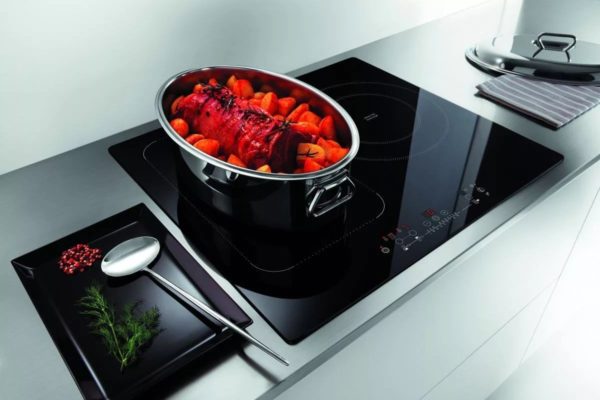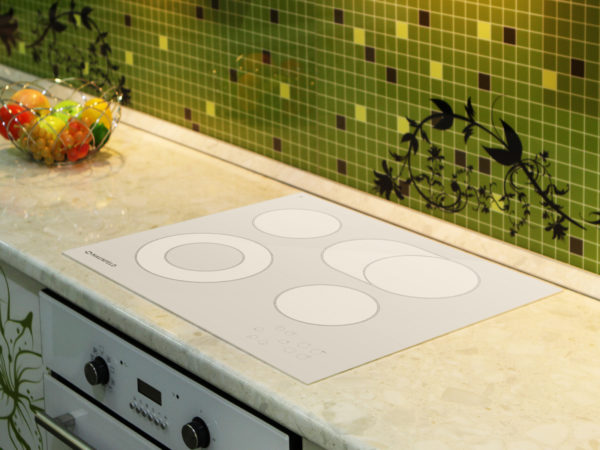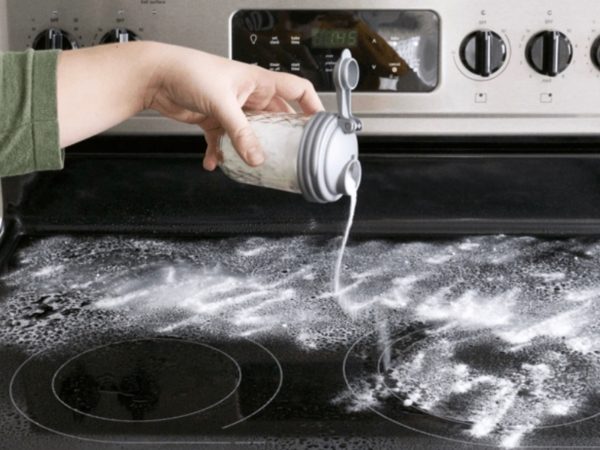The quality of food and the comfort of its preparation depend on a good stove. Today there are a large number of models, they differ not only in technical characteristics, but also in design. Making a choice can be very difficult. The type of coating of the slab plays an important role in the selection. Durability, comfort of use and other factors depend on this. There are induction, gas, electric and mixed cookers on the market now. Each of the types presented can be equipped with tempered glass, which covers the surface or acts as a burner.
Coating options for gas and electric hobs
In the manufacture of kitchen hobs, two types of coatings are used – tempered glass and glass ceramics. They have certain advantages and disadvantages and require regular care.

The type of load plays an important role. Harsh pressure points can cause the glass to shatter into shards.
Strained glass
The main feature of tempered glass is its increased strength. This characteristic is seven times higher than that of ordinary glass. Strength is achieved due to the manufacturing technology, which provides for strong heating (up to 600 degrees) with rapid cooling. As a result, the glass surface hardens, in the middle the material remains viscous. Hardening provides resistance to mechanical and temperature influences. Visually toughened glass is no different from ordinary glass.
Advantages and disadvantages
Advantages and disadvantages of the material:
- resistance to temperature influences – glass can withstand heating up to 160 degrees;
- relatively high degree of flexibility;
- resistance to mechanical shock.
Disadvantages:
- susceptibility to chipping at the edges of the glass;
- prohibition on processing (drilling, cutting) of the material.
The principle of operation and for which plates it is suitable
The tempered glass hobs are designed for gas-on-glass hobs. The burners are installed on top of the hob; it is they who are heated. Control is carried out using switches in the front, sometimes they are placed on the right. The most common models are considered to be with conventional regulators of fire intensity. This article will tell you about the description and characteristics of the Leomax pancake maker.
Tempered glass is not used in electric cookers due to its low resistance to heat.
Types of coated slabs
Tempered glass is most often used in the manufacture of independent and dependent gas stoves. In this case, the likelihood of getting burns while cooking is excluded, since the glass is not exposed to heating. Therefore, you can put a plastic countertop in the kitchen.

The main advantages of this technique are considered to be ease of operation, high heating rate, and uniform heating.
How to care
Tempered glass is easy to maintain. It is recommended to use a foam sponge to remove dirt. It must be moistened with soapy water and wiped over the entire surface. When descaling the combi hob, it is recommended to pre-soak and then remove the stain in the usual way. It is recommended to use a separate sponge when cleaning, this will help prevent deterioration of the glass from traces of detergent. The use of products with abrasive particles in the formulations is excluded.
The washed hob must be wiped dry immediately to help maintain transparency and shine.
Glass ceramics
Glass-ceramic sheets are usually made of quartz sand. Raw materials, to which other materials are added, are melted at high temperatures in kilns to form glass melt. A glass tape is formed, which is then cut to the dimensions required by the customer, the logo and decor are placed, ceramized again, and the necessary glass-ceramic panel is obtained.
Advantages and disadvantages
Advantages and disadvantages of glass ceramics:
- efficient operation of heating elements, rapid cooling and heating;
- the ability to control the degree of heating;
- changing the heating area, uniform heating of dishes of different diameters;
- ease of care;
- durability;
- high strength, resistance to stress;
- Ease of controls;
- aesthetic appearance.
Disadvantages:
- the need to use dishes with a flat bottom for cooking (ideal is stainless steel);
- sensitivity to temperature extremes;
- quite high price;
- the possibility of water damage to the hob up to failure.

The need to use special detergents is considered a serious disadvantage.
The principle of operation and for which plates it is suitable
Glass-ceramic hobs are installed on gas, electric and induction cookers. Induction models are economical and safe, their efficiency reaches 90%. The low prevalence of such stoves is associated with the high price and restrictions on the use of kitchen utensils. If the apartment is connected to the central gas supply, preference should be given to gas models. Such a panel will perfectly fit into the design of a kitchen with a gas water heater. The gas-under-glass plates are ideal for worn-out electrical wiring. Electric hobs are in great demand. The burners are heated using heating elements installed under the hob.
Types of coated slabs
Hobs with a glass ceramic hob most often have 2 or 4 cooking zones. There are the following types of burners: rapid, halogen, induction. Rapid ones generate a large amount of heat when heated, the heating rate reaches 10-12 seconds. Halogen lights heat up in 3 seconds and consume a lot of electricity. The principle of operation of induction burners is based on the heating mechanism; it is not the burner that is heated, but the bottom of the cookware. The hobs are divided into dependent and independent. The former are sold complete with an oven, the latter are sold separately.
Regular cleaning of the hob will help to avoid stubborn dirt. Sugar, syrups pose a great danger to the stove, such stains remain forever. When cooking, it is not recommended to use aluminum dishes, as well as enameled and copper ones, traces form on the hob from such objects, it is very difficult to get rid of them.
Conclusion
- The popularity of hobs only grows over time. In their manufacture, glass ceramics and protected glass are used.
- Protected glass is suitable for gas surfaces “gas from above”, during operation it is not exposed to heating. Glass ceramics are used in induction, gas and electric panels.
- When caring for electric hobs, as with any other, it is recommended to follow the rules. It is recommended to remove all contaminants immediately after their formation. When cleaning, you should use special products for the care of hobs.
